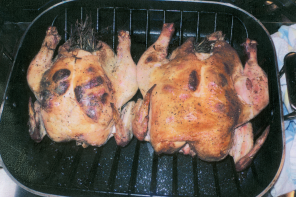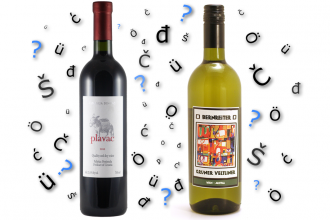For those unfamiliar with Pinotage, it probably sounds like an obscure French grape that can’t hold up to its more universally beloved cousins; if you have heard of it, you’d probably stay away. The South African grape has been suffering from a bad reputation for over twenty years – it’s about time those misconceptions are reversed.
Abraham Perold would agree. It’s 1925, and Perold, a South African chemist, is frustrated. The oenologist has brought over 177 varietals to the country, but his efforts to grow Pinot Noir were met with difficulties as the grape struggled in the new climate. While trying to get his wine fix and drawing on his knowledge of wine, he observed Cinsaut (or Hermitage, a red wine grape still popular in France), which thrived in the climate but didn’t bring the coveted taste of Pinot Noir. Seeing an opportunity, he combined them in his garden, and Pinotage was born.
Though it was as productive as Cinsault, Pinotage wasn’t the Pinot Noir substitute Perold was hoping for. The grape was very dark, loaded with tannins, anthocyanin, and cyanidin (the latter two are pigments), and primarily boasted notes of blackberry, tobacco, mocha, and plum, with the tannins providing a sweeter, smoky finish. Depending on its age and what wood is used during fermentation, you might also find bacon, red licorice, and sweet and sour sauce. A far cry from its progenitor’s light, low-tannic wine and red fruit notes, but a success nonetheless.
However, with Pinotage, it’s just as important to discuss how good it tastes with how bad it potentially can. A very volatile grape, it’s not uncommon for it to go wrong, usually when the wine is over-extracted, or has spent too long touching the skin. Combine that with the plethora of tannins and you get something that smells like nail polish remover and tastes even worse.
The extremes of that spectrum besmirched Pinotage’s good name. After the first commercial planting in 1943, Pinotage seemed to be on a fast track to wine fame, winning awards in the late 50s and early 60s. Fortunately and unfortunately, it’s very easy to grow in South Africa and producers took advantage of that in the 80s and 90s, yielding high quantities of low quality, ignorant or uncaring of the care required to make a good vintage. Its dark color only further hurt it – winemakers could thin it out considerably, putting bottles on the market that did nothing but solidify Pinotage as a flawed grape.
Thanks to the efforts of small winemakers, this is changing. They’re working to limit the amount of Pinotage that’s produced and tailor their techniques to make sure that the grapes are nurtured properly. With a better understanding of terroir and the belief that Pinotage is to South Africa what Shiraz is to Australia, it’s getting the attention and care it deserves.
These days, the best Pinotage will still possess notes of black fruit with a spicy undertone and a long finish. A popular trend recently has been to cultivate chocolate and coffee notes in the wine, a bit of a departure from the traditional style, but accessible to the casual drinker or one hoping to broaden his or her palate.
Forego a white and pick up a bottle of Pinotage as warmer weather rolls around: its bold, smoky flavors will stand up perfectly at a barbecue.









Thank you… very informative!
To enjoy Pinotage you don’t even need to forgo a white wine! Try Mellasat’s White Pinotage, made from 100% Pinotage grapes by whole bunch pressing then barrel fermentation. Back in 2007 it was the world’s first white Pinotage. Certainly another expression of South Africa’s national grape and a wine to be enjoyed in either winter or summer with a variety of foods.
I fully agree with your last four paragraphs, though as Stephen says, there are white Pinotages and Mellasat is an excellent example. Also many popular pink ones, and sparkling white and pink Pinotages — Loma Prieta Winery in Los Gatos, California was the first to make a sparkling white Pinotage.
But the statement about why Perold crossed the two varieties is assumption, Perold himself never gave a reason and in fact the Pinot-Cinsaut crossing he made was just one of seven different crossings he made that day. Perold was one of the world’s foremost viticulturists and he knew there were unexpected results from crossing vines, the only way to find out what is to try it.Peter F May
author of
PINOTAGE: Behind the Legends of South Africa’s Own Wine
Pinot does grow well in the Cape,and Perold himself helped plant the first Pinot vineyard at Muratie. Perold wrote in his Treatise on Viticulture, published in1927, that Pinot grows well and produces an excellent wine in the Cape so It seems very unlikely he was tryng to make a Pinot substitute with this crossing, which isn’t mentioned in the Treatise.
Though there was a period after democracy when poor wines came out of South Africa, including Pinotage, and Pinotage is a variety that challenges winemakers, there are very few — if any – badly made examples nowadays.
Peter F May
author of PINOTAGE: Behind the Legends of South Africa’s Own Wine